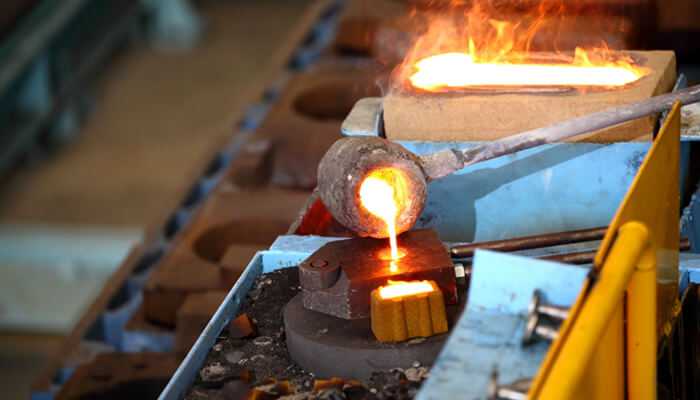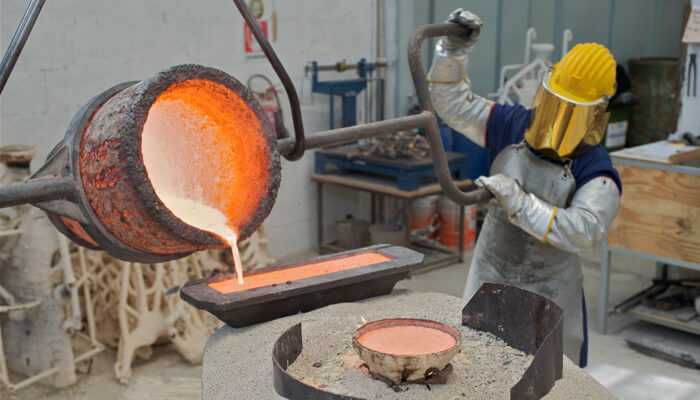Purchasing metal castings can not be always easy. Whatever your level of knowledge, both your end and the foundry’s have plenty to learn. Getting the best bang for your money depends on things including alloy choice, molding and finishing techniques, core needs, and supply terms. Your awareness of metal casting will help you to already begin evaluating the expenses and advantages. Before delving into the more well-known metal castings cost, there are several items you might not have thought of.
Economies of Scale – Weigh it Up
Say you need a casting order under 100 kg, but the foundry you’re using is set up for medium to large-scale casting. You’ll end up wasting money on both the furnace’s power and casting yield. It’s important to pick a foundry that fits your needs. For instance, if your order is over 1 metric tonne, go for a foundry that’s equipped for medium to high economies of scale, ideally with a furnace of 500 kg or larger.
Foundry Alterations – Be Prepared
When buying casting services from a foundry, don’t expect to get them at the supplied cost. If your foundry closes, you might have to spend a lot on new patterns at a different foundry or adjust existing ones to fit another’s equipment. It’s smart to choose a foundry that will stick around for as long as you need its castings, so be fair with the pricing when picking your ideal foundry partner.
Local Scrap and Supply Chain – Check for Kinks
A lot of your foundry’s raw material costs depend on the supply chain and local scrap availability. It’s key to understand not just what your chosen foundry’s costs are during the casting process, but also any costs that might come up before anything even hits the furnace. Keep reading to learn more about material costs below.
The Metal
To figure out the metal castings cost, you need three things: Alloy Type, Casting Weight, and Total Tree Weight (including runners and risers). Alloys combine a base metal like Iron, Copper, or Aluminium with various Additives. Even in tiny amounts, these Additives can drastically change a metal’s properties. Once you’ve nailed down the right Alloy or Composition, the casting process can kick off.
The Foundry
Your Foundry will figure out the required Alloys and Additives for the intended Composition and the base metal per kg of casting. Depending on your casting method, note that occasionally more chemicals are required to consider melting loss and oxidation.
Choose the metal source for the lowest raw material cost once you know the quantities of base metal and alloy additions. Useful cost benchmarks include worldwide markets such as the London Metal Exchange (LME).
Having your materials now, let’s concentrate on the furnace of your foundry. Melting comes initially, done in the furnaces of your foundry. Cast iron is made from cupola furnaces; popular for production casting are induction furnaces.
Melting metal castings cost mostly electricity plus labor and upkeep. Most foundries are aware of their metal castings cost per kilogramme at the spout—that is, the cost of one kilogramme of melted metal. Workforce numbers and power requirements vary depending on the foundry.
Costs of materials transcend procurement. Different types of alloys matter; some need more Furnace time because of their melting points. While smaller setups with expensive electricity may reach $1.50 USD per kg, an efficient Foundry can cut the cost for Cast Iron to $0.30 USD. Multiply the melting cost by the casting weight then divide by the casting yield. The yield is the actual casting percentage out of the casting tree. Crucially, you should be working with a Foundry using economies of size. Remember, larger isn’t necessarily better as Kilowatt capacity and efficiency determine Furnace melting costs as well.
Moulding Costs
Apart from cost melting, Foundries have to consider moulding expenses for their metal casting operation. Moulding is building a negative space or hollow that captures the form of the finished good. Here the molten metal will be poured and crystallized into the required shape. Moulding’s cost relies on several elements including:
-
- Kind of mold used—sand, ceramic, investment, etc.?
-
- Design complexity; weight and size of the finished good
-
- Production requires certain number of impressions.
-
- Time needed for curing and mould preparation
Larger Foundries could have a reduced per-unit cost for moulding depending on economies of scale and effective techniques, same as with melting costs. Smaller Foundries, however, could have a higher per-unit cost because of restricted resources and more labor expenses.
Foundries should give their moulding technique much thought and identify the most reasonably priced solutions for their particular requirements.
Labour Costs
Apart from the expenses of materials and molding, labour expenses play a major role in metal castings cost. Skilled individuals who can run machines, prepare moulds, pour molten metal, remove completed castings from the moulds, and conduct quality control inspections are needed for this operation.
Location and worker skill level will considerably affect labour expenses. High-wage developed nations could have far more labour costs than low-income ones.
Foundries must precisely control their labour expenses by streamlining procedures and making training investments for their employees if they are to remain competitive. They can also think about contracting out certain work to other businesses or nations with cheaper labour prices.



